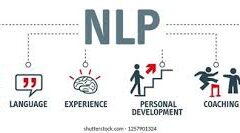The advent of AI has introduced a layer of complexity to the concept of trust, intertwining technology with societal and individual concerns in various ways. Patterns for Trust in AI address some of these concerns.
- AI blurs the distinction between human and machine interaction, making it increasingly challenging to discern whether we’re conversing with a person or a bot. This ambiguity fuels a spectrum of issues, ranging from cybersecurity threats to individual vulnerabilities like fraud.
- Rapid advancements in user interfaces and the proliferation of personalized services add layers of complexity, often leaving users bewildered about the inner workings of a service. The accelerated pace of this personalized service model is further propelled by AI, exacerbating the challenge of understanding and seeking recourse when things go awry.
- Many individuals lack comprehensive mental models of how AI systems operate, leading them to rely on anecdotal narratives rather than informed understanding. This deficiency in comprehension hampers individuals’ ability to assert their rights or exert control over AI systems, fostering fear and mistrust.
- There’s a pervasive tendency to place undue trust in technology, fueled by the misconception that AI is infallible and unbiased, neither of which holds true. Coupled with the deliberate design of AI systems to appear approachable and pleasant, this over-reliance on technology is poised to persist, potentially yielding significant repercussions.
Ultimately, this erosion of trust poses formidable obstacles to innovation and responsible development within teams.
To foster trust and mitigate these challenges, the adoption of design patterns emerges as a viable solution:
Design patterns encapsulate solutions to common problems in a manner that’s easily replicable by others, offering a framework for creating trustworthy services.
While design patterns streamline user experiences, they should also introduce a judicious level of friction to:
- Empower users with sufficient information about underlying systems, enabling informed decision-making.
- Humanize the complexities of AI systems to alleviate user frustration when interacting with automated tools.
- Facilitate comprehension of service changes, fostering a sense of safety and respect in the user experience.













